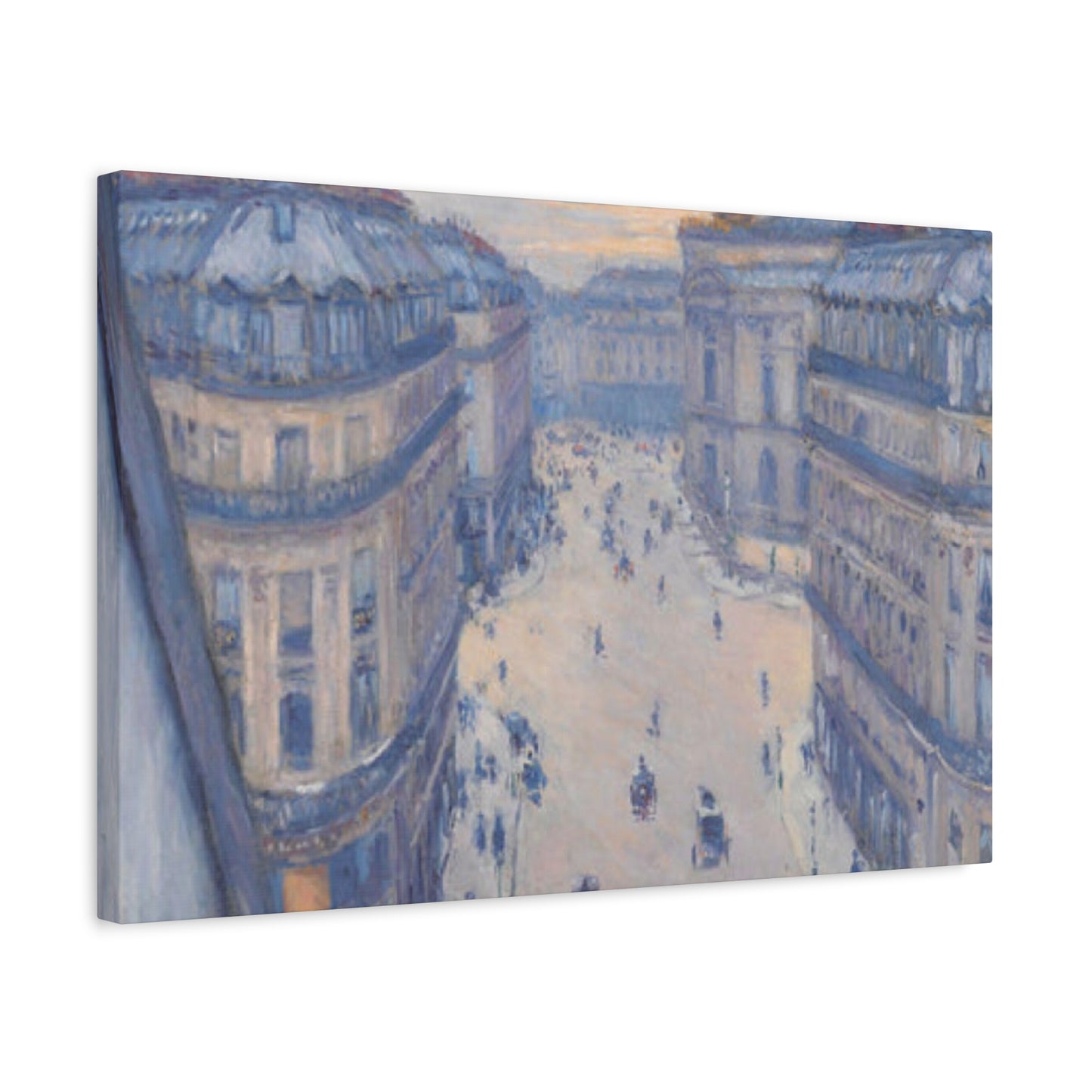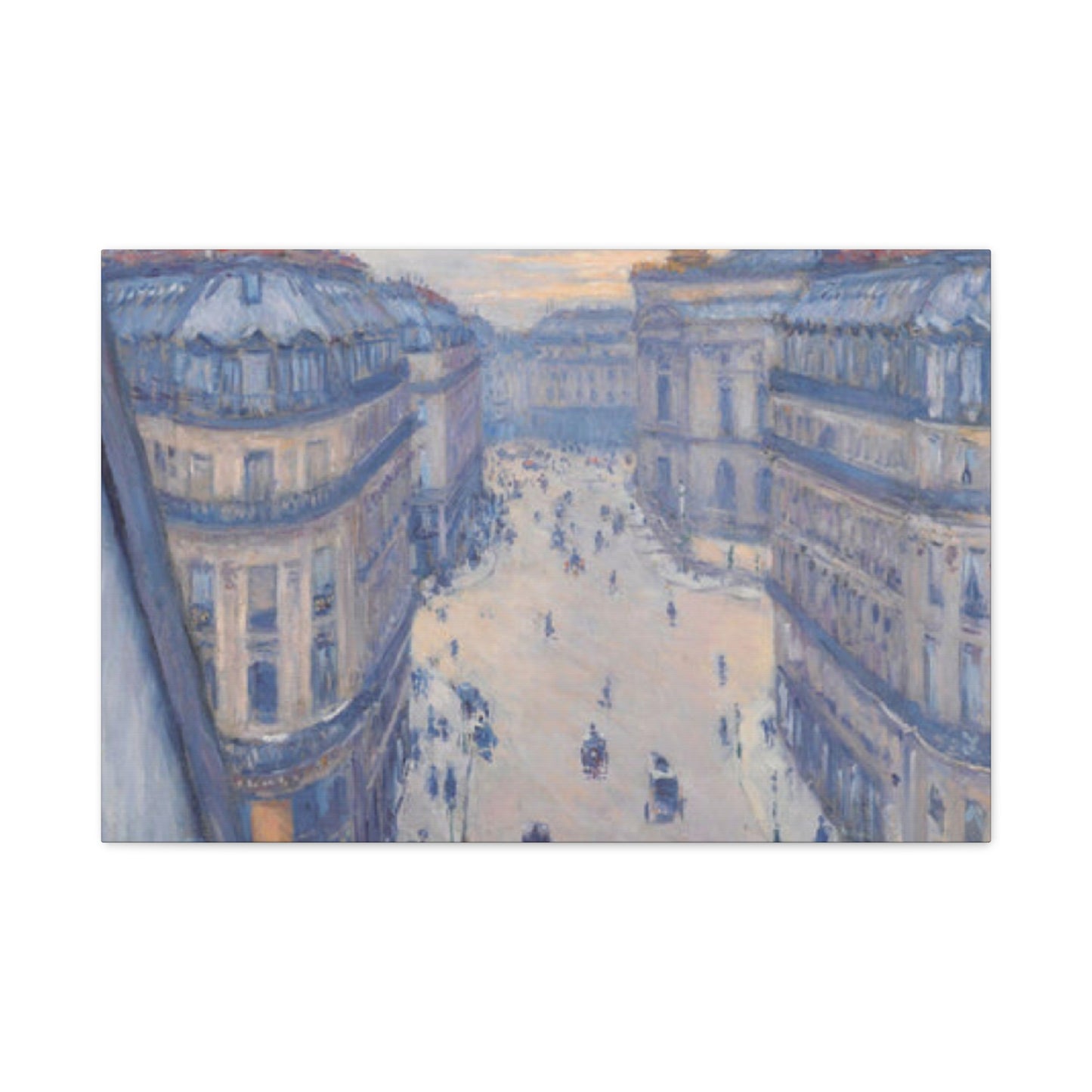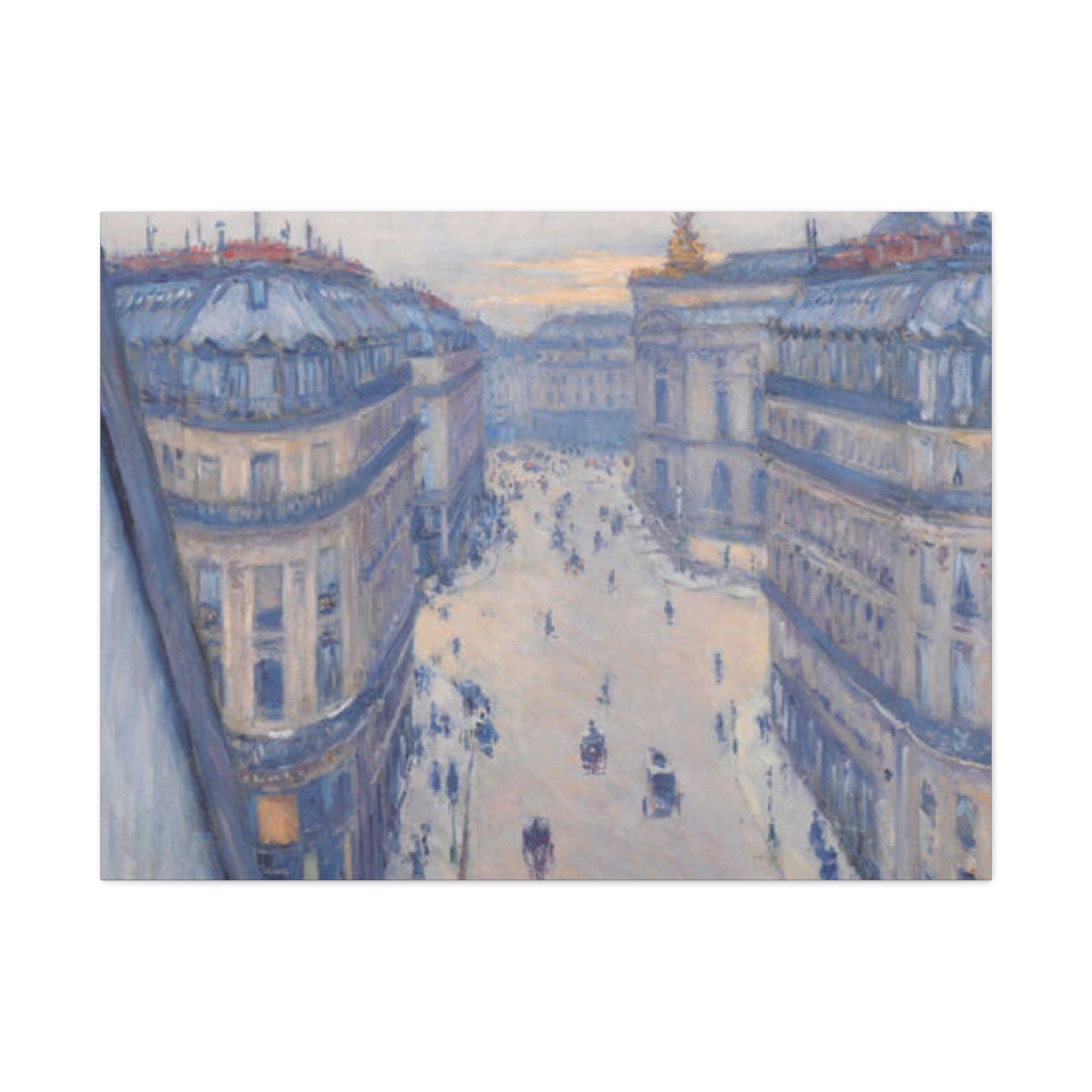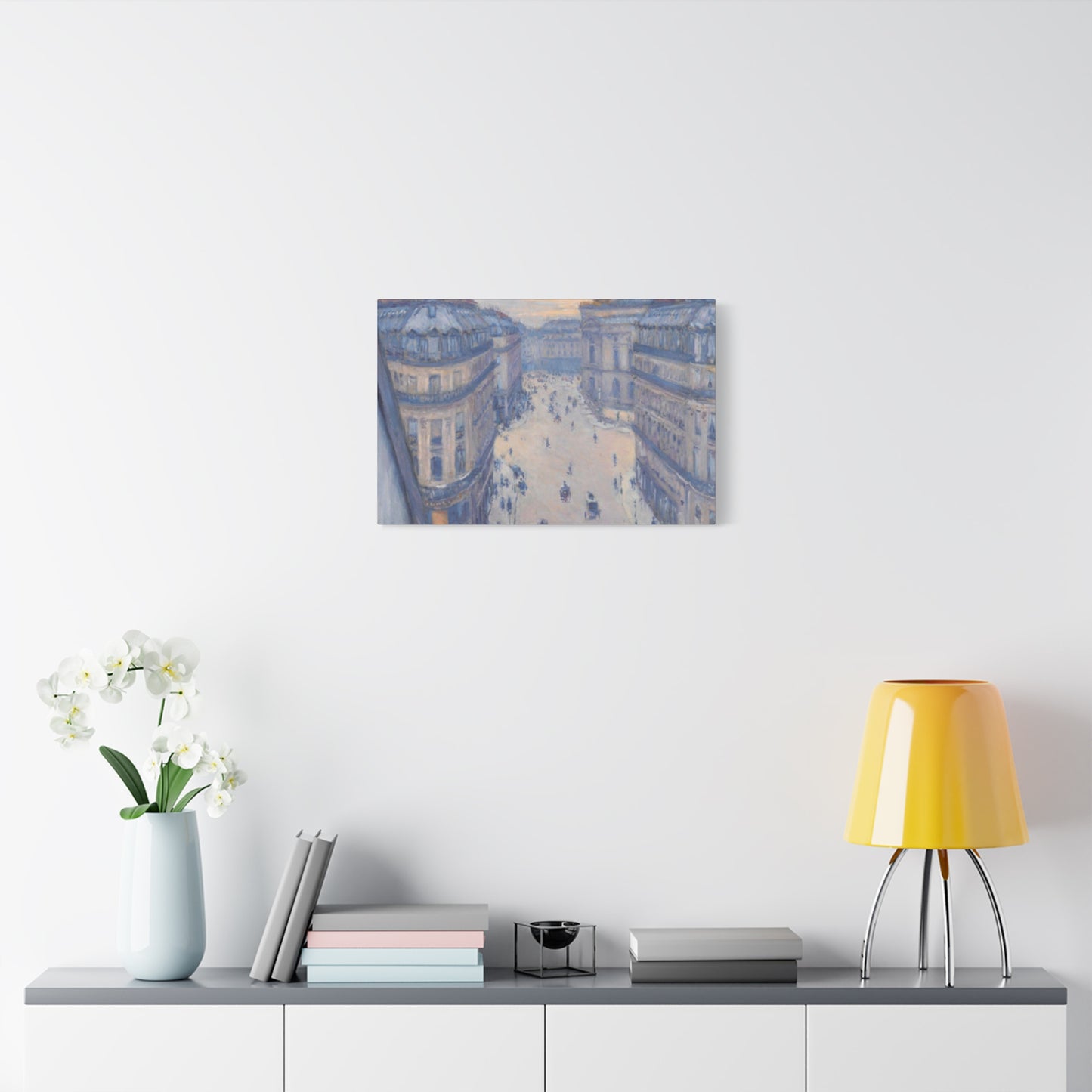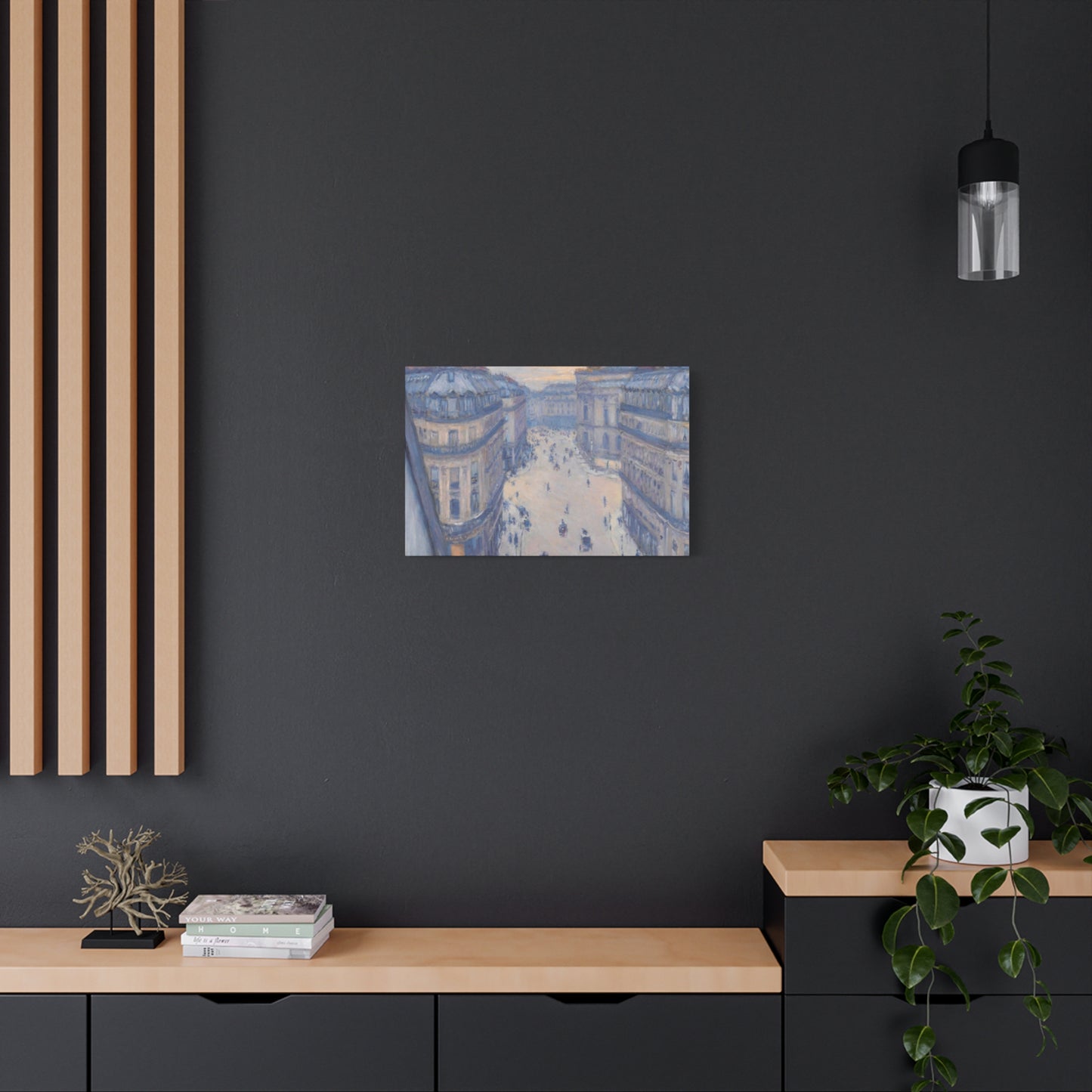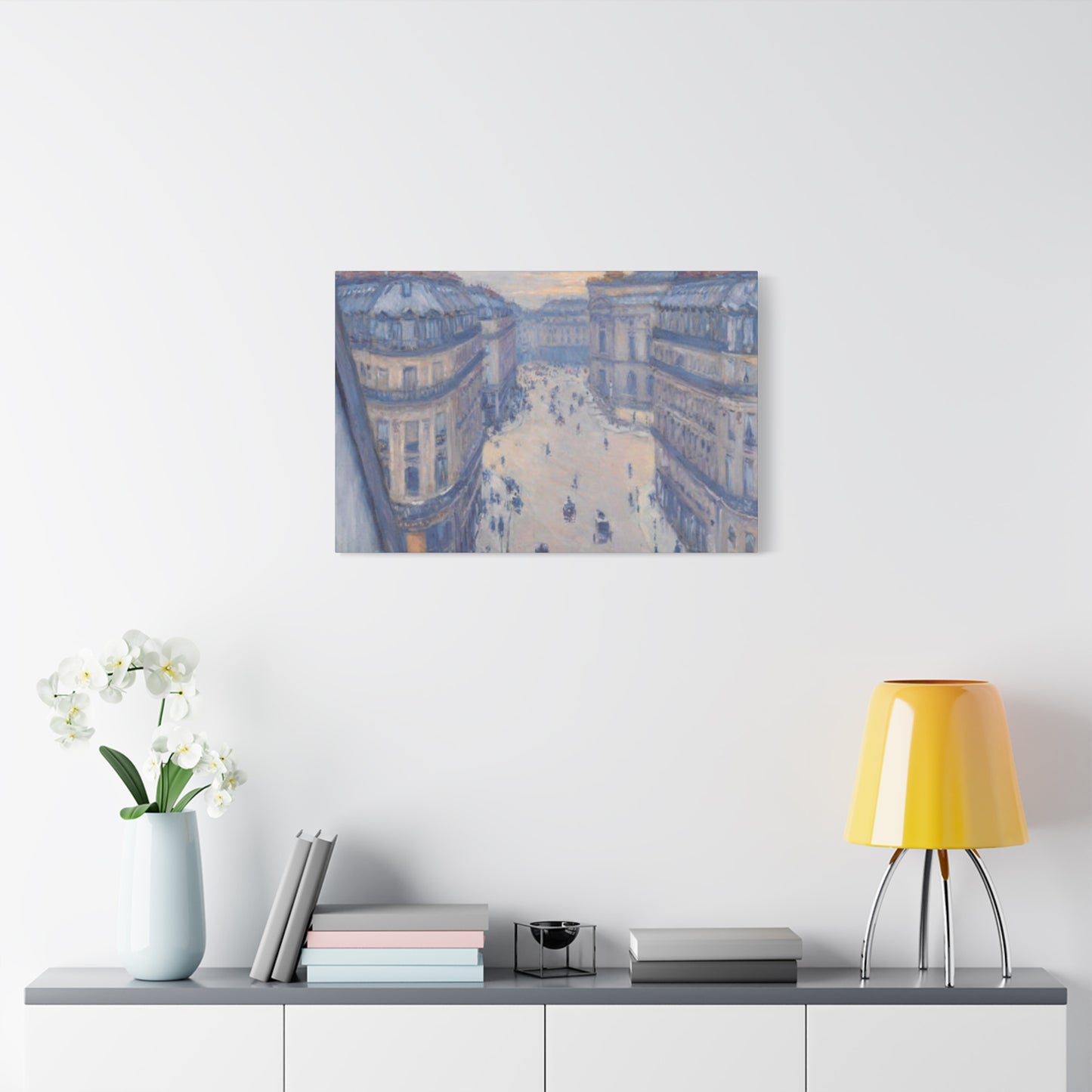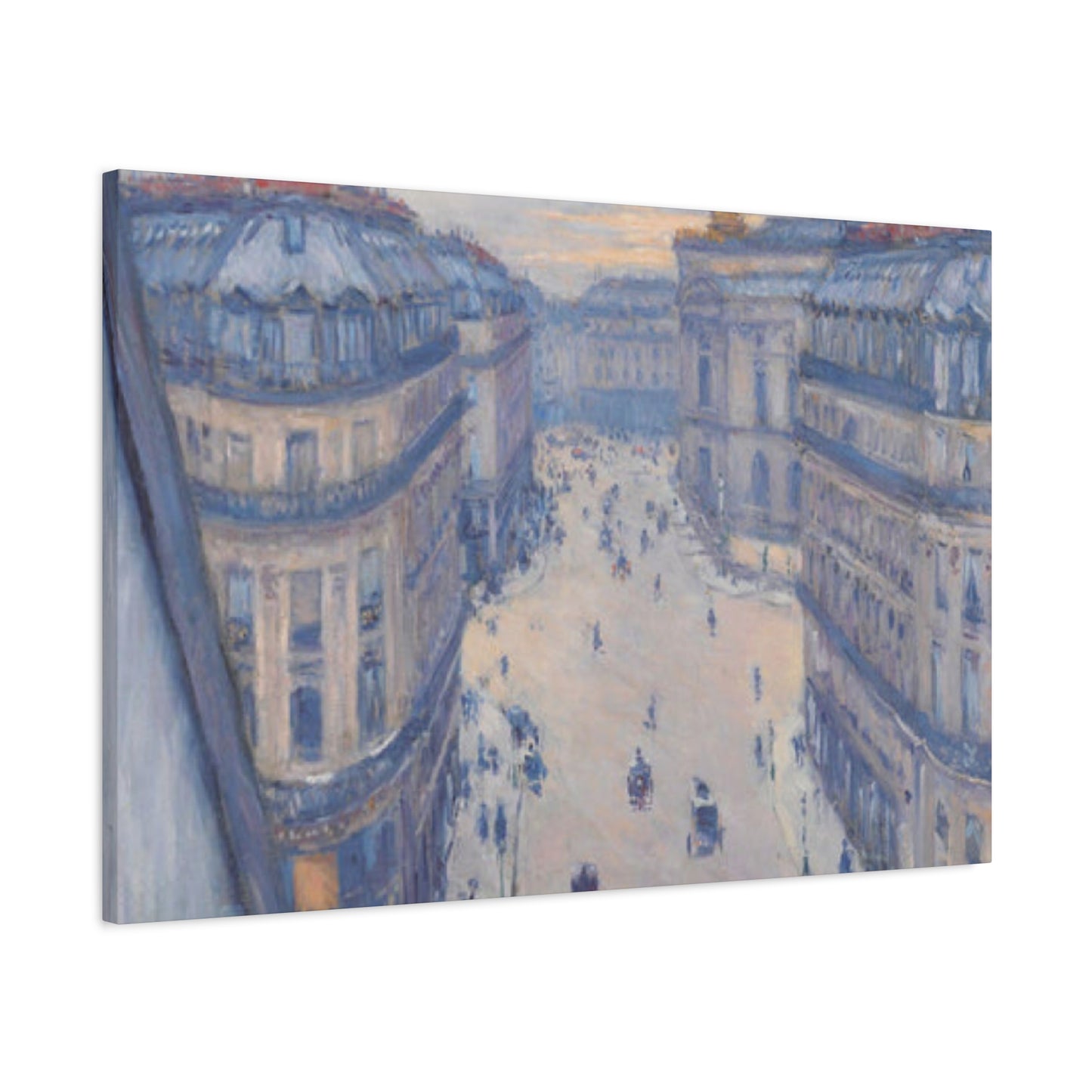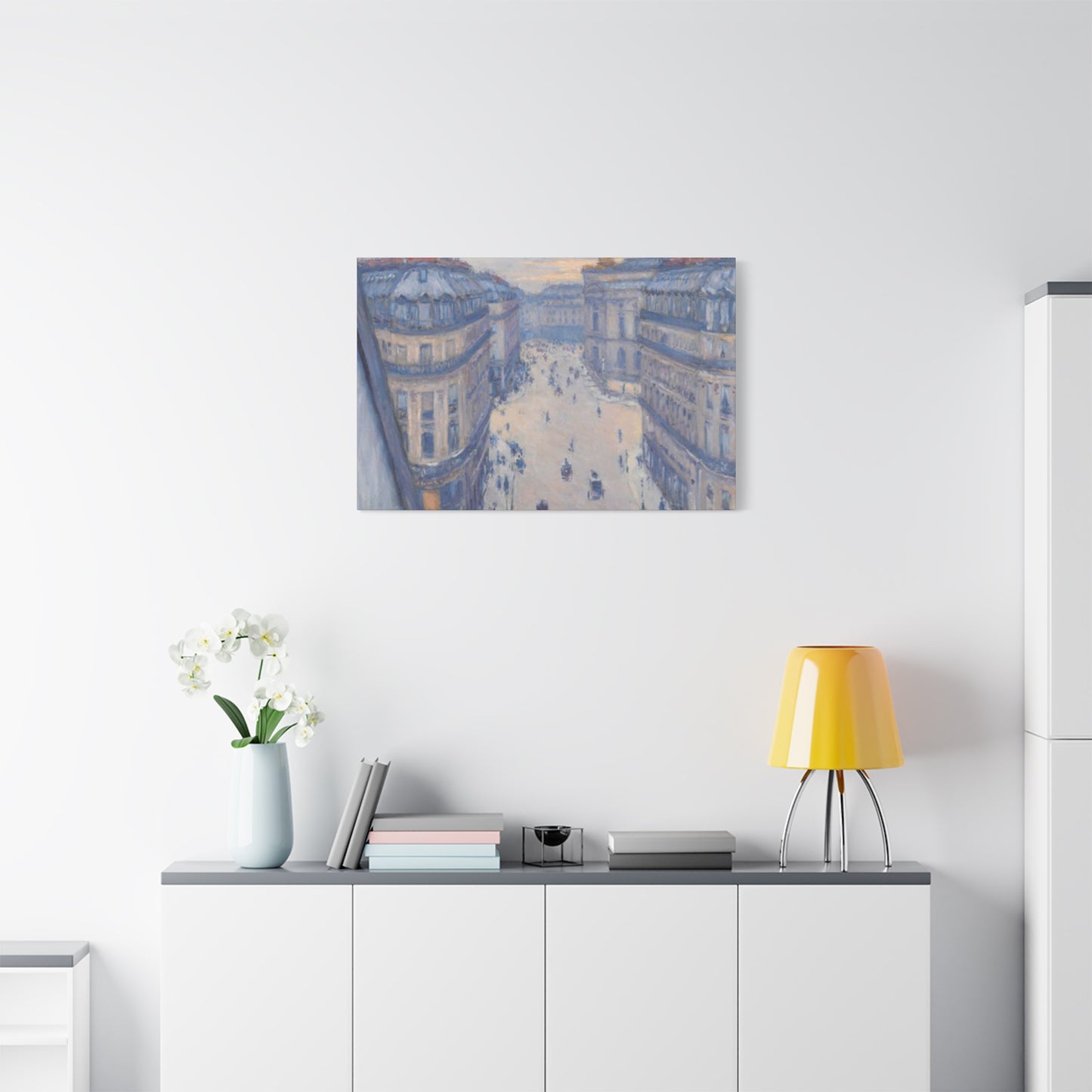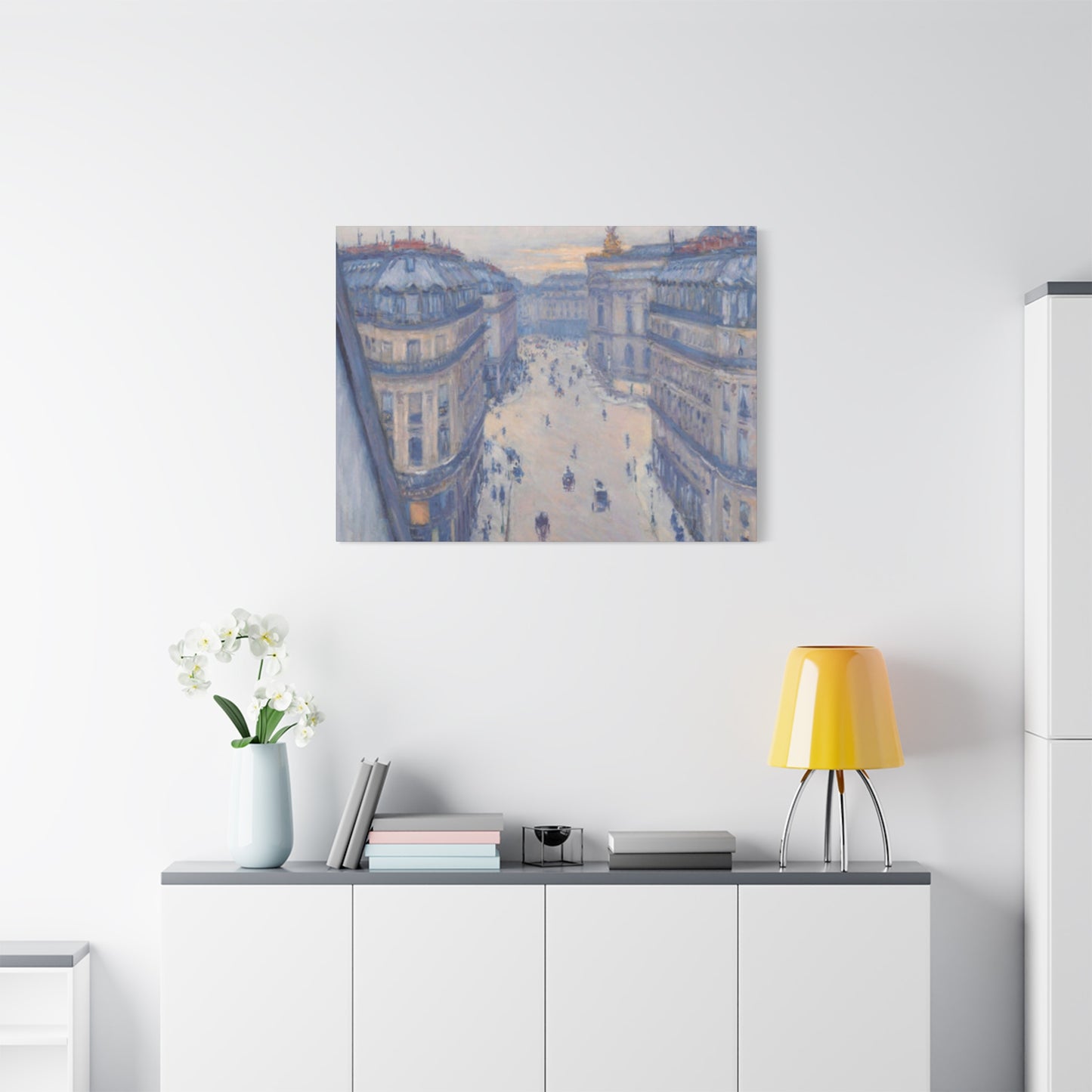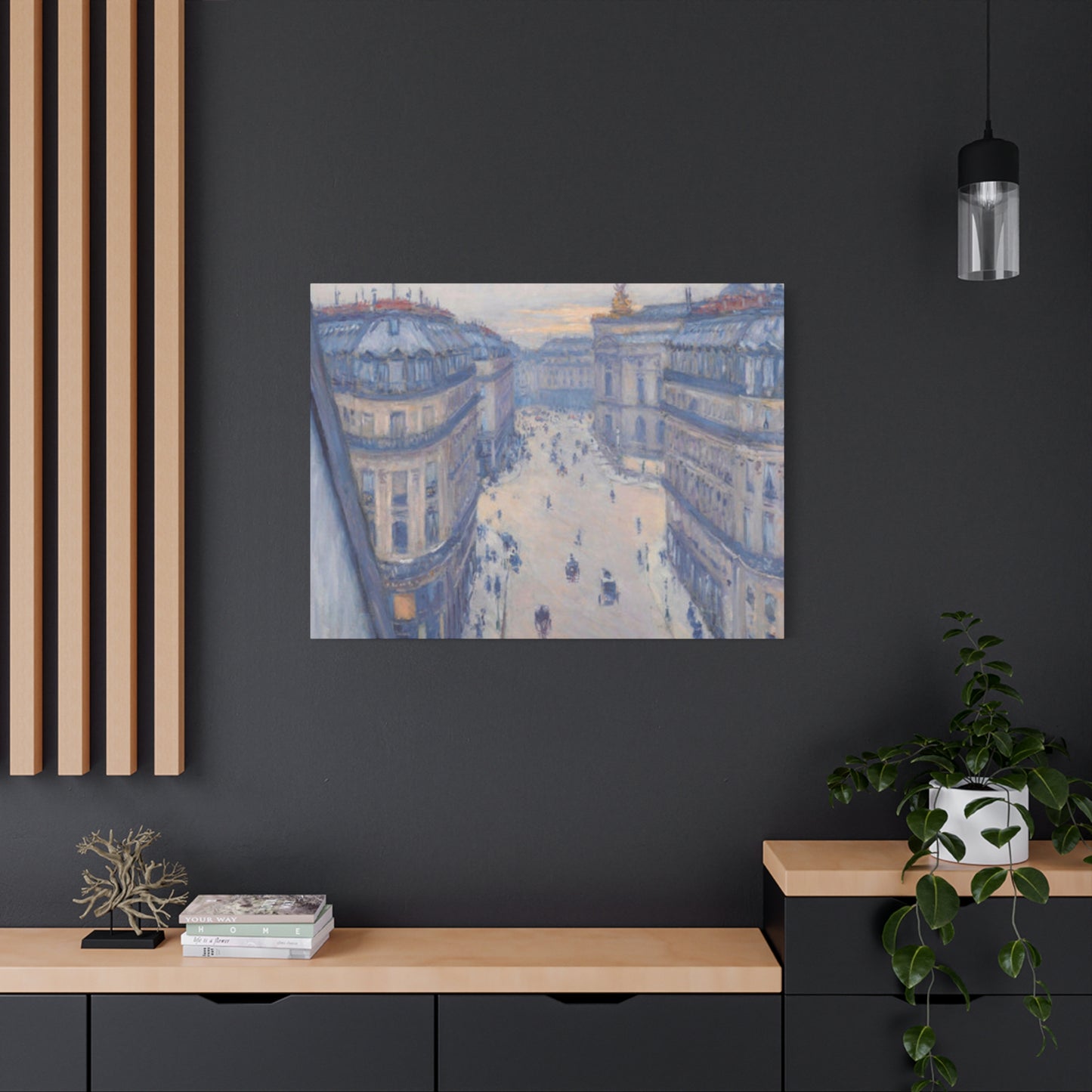Gustav Rome Painting Wall Art Inspired by the Eternal City
Gustav's artistic interpretation of Rome represents one of the most captivating collections of wall art dedicated to the Eternal City. His masterful brushstrokes bring to life the essence of Roman magnificence, creating visual narratives that transport viewers directly into the heart of this historic metropolis. Each painting serves as a window into Rome's soul, capturing both its grandeur and intimate moments with remarkable precision and emotional depth.
The artist's approach to depicting Rome goes beyond mere representation. Gustav's wall art embodies a deep understanding of the city's layered history, architectural splendor, and the unique quality of Roman light that has inspired artists for centuries. His paintings reveal an intimate relationship with the city's rhythms, from the bustling morning markets to the serene twilight hours when ancient stones glow with warmth.
Gustav's Rome wall art collection stands as a testament to his ability to blend classical techniques with contemporary sensibilities. His paintings capture the timeless appeal of Roman scenes while offering fresh perspectives that resonate with modern viewers. The artist's keen eye for detail, combined with his masterful use of color and composition, creates artworks that serve as both beautiful decorations and meaningful cultural artifacts.
Through his extensive study of Roman architecture, streetscapes, and daily life, Gustav has developed a distinctive visual language that speaks to art enthusiasts and casual observers alike. His wall art pieces invite contemplation, encouraging viewers to explore the rich tapestry of Roman culture through the lens of artistic interpretation. Each painting tells a story, whether it depicts a famous landmark or a quiet corner of the city that might otherwise go unnoticed.
The emotional resonance of Gustav's Rome wall art stems from his ability to capture fleeting moments of beauty within the permanent grandeur of the city. His paintings preserve the ephemeral quality of light dancing across ancient facades, the gentle movement of shadows in narrow alleyways, and the vibrant energy of Roman life that continues to flow through streets walked by countless generations.
Gustav's Artistic Interpretation of Roman Essence Through Visual Storytelling
The depth of Gustav's connection to Rome becomes evident through his nuanced portrayal of the city's character. His wall art reveals an artist who has spent considerable time observing and absorbing the subtle variations in mood and atmosphere that define different areas of Rome. From the majestic grandeur of ancient monuments to the charming intimacy of neighborhood trattorias, Gustav's paintings capture the full spectrum of Roman experiences.
Gustav's technique involves layering historical awareness with contemporary artistic sensibility, creating wall art that bridges past and present. His paintings acknowledge Rome's ancient heritage while celebrating its continued vitality as a living, breathing city. This approach results in artworks that feel both timeless and immediate, offering viewers a sense of connection to Rome's ongoing story.
The artist's color palette reflects his deep appreciation for Rome's distinctive chromatic environment. Gustav's wall art employs warm ochres, rich terracottas, and golden hues that mirror the natural tones of Roman architecture and the quality of Mediterranean light. These color choices create a cohesive visual identity across his Rome collection while allowing each individual painting to maintain its unique character.
Gustav's compositional strategies demonstrate his understanding of how Romans themselves experience their city. His paintings often frame familiar landmarks from unexpected angles, revealing fresh perspectives on well-known sites. This approach invites viewers to see Rome through new eyes, discovering beauty in both iconic vistas and hidden corners that locals treasure.
Architectural Magnificence Captured in Gustav's Roman Wall Art
Gustav's portrayal of Roman architecture showcases his exceptional ability to render structural complexity with both accuracy and artistic flair. His wall art celebrates the engineering marvels of ancient Rome while highlighting the harmonious integration of different historical periods within the city's built environment. Each architectural element in his paintings receives careful attention, from the weathered textures of ancient stones to the elegant curves of Renaissance facades.
The artist's treatment of Roman architectural details reveals his dedication to understanding the craftsmanship behind these monumental structures. Gustav's wall art captures the play of light and shadow across columns, arches, and decorative elements, bringing dimensional depth to flat surfaces. His paintings demonstrate how architectural features create rhythm and movement within urban landscapes, contributing to Rome's visual symphony.
Gustav's architectural paintings serve as educational tools as well as aesthetic objects. His wall art helps viewers appreciate the technical achievements of Roman builders while celebrating the enduring beauty of their creations. The artist's careful observation of proportion, scale, and ornamental detail provides insights into the values and aspirations of the cultures that shaped Rome's built environment.
The integration of architectural elements with human activity in Gustav's paintings reflects his understanding of buildings as living environments rather than static monuments. His wall art shows how Roman architecture continues to serve contemporary needs while maintaining its historical significance. This perspective creates a dynamic relationship between past and present that enriches the viewing experience.
Gustav's architectural wall art also explores the relationship between individual structures and the broader urban fabric. His paintings demonstrate how Roman buildings create cohesive streetscapes and contribute to the city's overall character. This holistic approach helps viewers appreciate the cumulative effect of centuries of architectural development.
Historic Roman Landmarks Through Gustav's Artistic Lens
Gustav's depictions of Rome's most celebrated landmarks offer fresh perspectives on familiar sites. His wall art transforms iconic monuments into personal artistic statements while maintaining respect for their historical significance. The artist's approach to these famous locations involves finding unique viewpoints that reveal previously unnoticed aspects of their character and beauty.
The Colosseum appears in Gustav's wall art not merely as a tourist destination but as a complex architectural achievement that continues to inspire awe. His paintings capture different moods of this ancient amphitheater, from the dramatic shadows cast during midday sun to the golden glow of sunset that transforms the weathered travertine into warm, living stone. Gustav's artistic interpretation reveals the Colosseum's enduring power to evoke emotional responses.
Gustav's treatment of the Roman Forum in his wall art emphasizes the layered nature of this archaeological site. His paintings help viewers understand how different historical periods coexist within this compact area, creating a visual timeline of Roman civilization. The artist's careful attention to the relationship between ruins and their surrounding environment provides context for understanding the Forum's original grandeur.
The Pantheon receives particular attention in Gustav's Rome wall art collection, with the artist exploring both its exterior magnificence and the mysterious quality of light within its domed interior. His paintings capture the building's perfect proportions and the way its design creates a sense of harmony between earthly and celestial realms. Gustav's artistic vision helps viewers appreciate why this structure has inspired architects for nearly two thousand years.
Gustav's depictions of Trajan's Column, the Baths of Caracalla, and other significant monuments demonstrate his ability to find beauty in structures of varying scales and purposes. His wall art reveals how each landmark contributes to Rome's overall character while maintaining its individual significance within the city's historical narrative.
Decorating Contemporary Environments with Gustav's Roman Wall Art
Gustav's Rome wall art offers exceptional versatility for contemporary decorating schemes. His paintings possess the rare quality of enhancing both traditional and modern environments while maintaining their artistic integrity. The warm color palettes and classical subjects provide sophisticated focal points that complement a wide range of decorating styles without overwhelming existing elements.
The scale and composition of Gustav's wall art make his pieces particularly suitable for creating dramatic impact in residential and commercial environments. His larger canvases can serve as statement pieces in living rooms, offices, or hospitality settings, while smaller works can be grouped to create compelling gallery walls. The artist's consistent style allows for effective mixing and matching across different sizes and subjects.
Gustav's Roman wall art works exceptionally well in dining areas, where the warm tones and cultural associations enhance the social atmosphere. His paintings of Roman streetscapes and architectural details create conversation starters while providing visual interest that doesn't distract from dining experiences. The sophisticated subject matter appeals to guests with diverse cultural backgrounds and interests.
Professional environments benefit significantly from Gustav's Roman wall art, as these pieces convey cultural sophistication and historical awareness. His paintings can enhance law offices, consulting firms, and other businesses where classical associations support brand identity. The timeless appeal of Roman subjects ensures that the artwork remains relevant and appropriate over time.
Gustav's wall art also proves valuable in educational and cultural institutions. His paintings can support learning environments by providing visual references for discussions of history, architecture, and art. The detailed accuracy of his work makes these pieces useful for educational purposes while their aesthetic appeal ensures they enhance rather than compromise the visual environment.
The Mastery of Light in Gustav's Roman Scenes
Gustav's exceptional handling of light represents one of his greatest artistic achievements in his Rome wall art collection. His understanding of how Mediterranean light behaves throughout the day allows him to create paintings that capture the specific quality of illumination that makes Rome so visually compelling. Each work demonstrates his ability to render light as both a descriptive tool and an emotional element.
The morning light in Gustav's Roman wall art possesses a clarity and freshness that reflects the renewed energy of each day in the Eternal City. His paintings capture how early sunlight warms ancient stones and creates crisp shadows that define architectural details. This treatment of morning illumination gives his artworks a sense of optimism and renewal that resonates with viewers.
Gustav's handling of midday light showcases his technical mastery and understanding of color theory. His wall art captures the intense brightness of Roman summers without losing detail in highlights or shadows. The artist's ability to maintain color saturation under harsh lighting conditions demonstrates sophisticated observation skills and painting technique.
The golden hour receives particular attention in Gustav's Rome wall art, with the artist capturing the magical quality of light that occurs just before sunset. His paintings show how this warm illumination transforms ordinary architectural details into extraordinary visual experiences. The emotional impact of these lighting conditions enhances the romantic appeal of his Roman scenes.
Gustav's treatment of interior lighting in his wall art reveals his understanding of how natural light behaves within Roman architecture. His paintings of church interiors, courtyard scenes, and covered markets demonstrate how builders throughout history have manipulated light to create specific atmospheric effects. These works help viewers appreciate the sophisticated relationship between architecture and illumination.
Roman Streets and Landscapes in Gustav's Artistic Vision
Gustav's portrayal of Roman streets in his wall art captures the unique character of the city's urban fabric. His paintings reveal how narrow medieval lanes, broad Renaissance boulevards, and ancient Roman roads create a complex network that tells the story of urban development over two millennia. Each street scene offers insights into different aspects of Roman life and culture.
The artist's attention to street-level details in his wall art demonstrates his appreciation for the small elements that contribute to Rome's distinctive atmosphere. His paintings capture weathered doorways, decorative ironwork, colorful shutters, and the countless other details that create visual richness in Roman streetscapes. These elements combine to create paintings that reward close examination while maintaining strong overall composition.
Gustav's treatment of Roman piazzas in his wall art showcases his understanding of how these public locations function as social and cultural centers. His paintings capture different moods of these gathering places, from the quiet contemplation of early morning to the vibrant energy of evening celebrations. The artist's work reveals how architecture and human activity combine to create meaningful public environments.
The integration of landscape elements within urban settings receives careful attention in Gustav's Roman wall art. His paintings show how gardens, fountains, and tree-lined avenues contribute to the city's livability and beauty. The artist's work demonstrates how Romans throughout history have maintained connections with nature despite living in a densely built environment.
Gustav's street scenes also capture the layered quality of Roman urban development. His wall art shows how buildings from different periods coexist within single views, creating visual complexity that reflects the city's long history. This approach helps viewers understand how Rome's contemporary character results from centuries of continuous development and adaptation.
The Profound Influence of Rome on Gustav's Artistic Development
Gustav's artistic evolution has been significantly shaped by his ongoing relationship with Rome. His wall art collection reflects how sustained exposure to the city's visual richness has refined his technique and deepened his understanding of artistic possibilities. Each painting demonstrates growth in his ability to capture complex relationships between light, architecture, and atmosphere.
The artist's early Rome wall art shows enthusiasm for the city's obvious attractions, while his more recent work reveals deeper appreciation for subtle qualities that require extended observation to appreciate. This artistic maturation process creates a collection that appeals to viewers at different levels of engagement with Roman culture and artistic appreciation.
Gustav's development of signature techniques can be traced through his Rome wall art collection. His handling of architectural textures, treatment of atmospheric effects, and approach to color harmony have all evolved through his sustained engagement with Roman subjects. This technical development enhances the aesthetic appeal of his paintings while demonstrating his commitment to artistic growth.
The influence of Roman artistic traditions appears throughout Gustav's wall art, though filtered through his contemporary sensibility. His work shows awareness of classical painting traditions while maintaining originality and personal expression. This balance between respect for tradition and individual creativity creates artworks that feel both familiar and fresh.
Gustav's Rome wall art also reflects his growing understanding of how art can serve multiple purposes simultaneously. His paintings function as beautiful objects, cultural documents, and personal expressions, demonstrating the artist's belief in art's capacity to operate on multiple levels of meaning and significance.
Atmospheric Qualities in Gustav's Roman Paintings
Gustav's exceptional ability to capture atmospheric conditions sets his Rome wall art apart from conventional architectural or topographical paintings. His work demonstrates deep understanding of how weather, season, and time of day affect the visual character of Roman scenes. Each painting preserves a specific atmospheric moment that contributes to its emotional impact and aesthetic appeal.
The artist's treatment of Roman winter atmosphere in his wall art captures the unique quality of Mediterranean winter light. His paintings show how reduced sun angles create longer shadows and different color temperatures that transform familiar landmarks. These seasonal variations add depth to his collection while demonstrating his commitment to accurate observation.
Gustav's summer wall art captures the intense heat and brilliant light that characterize Roman summers. His paintings show how extreme lighting conditions create strong contrasts and saturated colors that give the city a different character during these months. The artist's ability to render these conditions without losing subtlety demonstrates sophisticated technical skills.
Spring and autumn atmospheric conditions receive equally careful attention in Gustav's Rome wall art. His paintings capture the fresh clarity of spring air and the warm, golden quality of autumn light that make these seasons particularly appealing to visitors and locals alike. These atmospheric variations contribute to the comprehensive nature of his Rome collection.
Gustav's treatment of weather phenomena in his wall art adds drama and interest to his compositions. His paintings of Rome during rainstorms, morning fog, or dramatic cloud formations demonstrate his ability to find beauty in challenging conditions. These works show how weather can transform familiar scenes into extraordinary visual experiences.
Color Harmony and Palette in Gustav's Roman Art Collection
Gustav's sophisticated use of color represents a fundamental strength of his Rome wall art collection. His palette reflects deep understanding of how colors interact with Roman light and architecture to create specific emotional and aesthetic effects. Each painting demonstrates careful color choices that support both compositional goals and atmospheric accuracy.
The warm earth tones that dominate Gustav's Roman wall art mirror the natural materials used throughout the city's construction history. His paintings employ ochres, siennas, and umbers that echo the colors of travertine, brick, and stucco that define Roman architecture. These color choices create immediate visual connections between his artworks and their subjects.
Gustav's handling of accent colors in his Rome wall art demonstrates his understanding of how small areas of contrasting hue can enliven compositions dominated by neutral tones. His strategic placement of blues, greens, and other colors creates visual interest while maintaining overall harmony. These accents often correspond to natural elements like sky, vegetation, or water features.
The artist's treatment of color temperature in his wall art reveals his awareness of how warm and cool colors can be used to create spatial depth and atmospheric effects. His paintings use color temperature shifts to model three-dimensional forms and suggest atmospheric perspective. This technical sophistication enhances the believability and visual impact of his Roman scenes.
Gustav's color choices also reflect his emotional response to Roman environments. His wall art uses color to convey feelings of warmth, history, and cultural richness that many people associate with Rome. This emotional use of color helps his paintings connect with viewers on levels beyond mere visual representation.
Home Display Strategies for Gustav's Roman Wall Art
Displaying Gustav's Rome wall art effectively requires understanding how these paintings interact with residential environments. His works possess sufficient visual strength to serve as focal points while maintaining enough subtlety to integrate harmoniously with existing decorating schemes. Proper placement and lighting can maximize the impact of these sophisticated artworks.
Living room installations of Gustav's Roman wall art benefit from careful consideration of viewing distances and angles. His larger paintings work effectively above seating areas where they can be appreciated during conversation and relaxation. The warm colors and engaging subjects make these pieces particularly suitable for social environments where they contribute to welcoming atmospheres.
Hallway and stair wall installations provide excellent opportunities to display series of Gustav's smaller Roman wall art pieces. These transitional locations allow for extended viewing as people move through the home, making them ideal for artworks that reward closer examination. The artist's consistent style creates visual continuity in these extended installations.
Bedroom applications of Gustav's Roman wall art should focus on the more serene and contemplative pieces in his collection. His paintings of quiet Roman courtyards, early morning street scenes, or peaceful architectural details can enhance restful environments without creating overstimulation. The warm color palettes support relaxing atmospheres.
Dining room installations benefit from Gustav's more social Roman wall art subjects. His paintings of bustling piazzas, outdoor cafes, or market scenes can enhance dining experiences by creating associations with Roman culinary culture. The sophisticated subject matter provides conversation topics while supporting the social aspects of dining.
The Narrative Depth Behind Gustav's Roman Art Collection
Gustav's Rome wall art collection represents more than aesthetic achievement; each painting contributes to an ongoing narrative about the artist's relationship with the Eternal City. His works document personal discoveries, artistic developments, and evolving understanding of Roman culture that unfold over time. This narrative dimension adds depth and meaning to individual pieces while enhancing the collection's overall significance.
The chronological development visible in Gustav's Roman wall art reveals his artistic journey from initial fascination to mature understanding. Early works show excitement and wonder at Rome's obvious attractions, while later paintings demonstrate deeper appreciation for subtle qualities that require extended observation. This progression creates educational value for viewers interested in artistic development.
Gustav's artistic documentation of specific Roman locations over time creates valuable historical records of how these places change and evolve. His wall art captures details of architecture, street life, and atmospheric conditions that might otherwise be forgotten. These documentary aspects enhance the cultural value of his paintings beyond their aesthetic appeal.
The personal elements embedded within Gustav's Roman wall art reflect his individual responses to specific locations and experiences. His paintings preserve moments of artistic inspiration and emotional connection that resonate with viewers who have experienced similar feelings in Rome. This personal dimension creates authentic emotional connections between artworks and audiences.
Gustav's collection also tells broader stories about the continued relevance of classical culture in contemporary life. His wall art demonstrates how ancient Roman achievements continue to inspire and influence modern artistic expression. This cultural continuity adds significance to his work while supporting arguments for the ongoing value of classical education and appreciation.
Integrating Gustav's Roman Art with Contemporary Decorating Trends
Gustav's Rome wall art demonstrates remarkable compatibility with current decorating trends while maintaining classical appeal that transcends temporary fashion. His paintings work effectively within minimalist schemes where their sophisticated subjects and restrained color palettes provide visual interest without creating clutter. The timeless appeal of Roman subjects ensures continued relevance regardless of changing decorating preferences.
Contemporary eclectic decorating approaches benefit significantly from Gustav's Roman wall art as these pieces provide cultural depth and historical reference that enhance mixed decorating schemes. His paintings can serve as unifying elements that bring coherence to rooms containing furniture and accessories from different periods and styles. The classical subjects provide stable reference points within dynamic decorating concepts.
Industrial decorating themes find unexpected harmony with Gustav's Roman wall art, as both approaches appreciate the beauty of structural elements and weathered materials. His paintings of Roman architecture complement exposed brick, steel beams, and other industrial elements while adding warmth and cultural sophistication. This combination creates unique environments that feel both contemporary and historically grounded.
Scandinavian-influenced decorating schemes can incorporate Gustav's Roman wall art to add warmth and cultural richness to otherwise austere environments. His paintings provide color and visual complexity that complement the clean lines and natural materials favored in Nordic design approaches. The combination creates sophisticated international environments.
Mid-century modern decorating themes benefit from Gustav's Roman wall art as accent pieces that add classical references to predominantly contemporary schemes. His paintings can provide cultural weight and historical perspective that balance the forward-looking orientation of mid-century design. This combination creates environments that feel both progressive and culturally grounded.
The Emotional Resonance of Roman Scenes in Gustav's Artwork
Gustav's Rome wall art possesses exceptional ability to evoke emotional responses from viewers. His paintings tap into deep cultural associations with Rome as a center of civilization, artistic achievement, and romantic appeal. Each work creates emotional connections that go beyond aesthetic appreciation to include feelings of wanderlust, cultural curiosity, and historical awareness.
The nostalgic qualities present in Gustav's Roman wall art appeal to viewers' desires for connection with past cultures and different ways of life. His paintings evoke feelings of longing for experiences of beauty, craftsmanship, and cultural sophistication that many people associate with classical civilizations. These emotional associations enhance the appeal of his artworks for contemporary audiences.
Gustav's treatment of human figures within his Roman wall art creates emotional connections through implied narratives and shared experiences. His paintings suggest stories about daily life, social interactions, and personal moments that viewers can relate to despite historical and cultural differences. These human elements make his classical subjects accessible to contemporary audiences.
The aspirational qualities of Gustav's Roman wall art inspire viewers to seek beauty and cultural enrichment in their own lives. His paintings present Rome as a destination for aesthetic and intellectual exploration, encouraging travel, learning, and cultural engagement. These inspirational aspects give his artworks practical value beyond mere decoration.
Gustav's ability to capture moments of beauty within everyday Roman scenes helps viewers develop appreciation for finding extraordinary qualities in ordinary experiences. His wall art demonstrates how careful observation and aesthetic sensitivity can reveal beauty in commonplace situations, encouraging similar awareness in daily life.
Gustav's Roman Art as Travel and Cultural Inspiration
Gustav's Rome wall art serves as powerful inspiration for travel and cultural exploration. His paintings capture the essence of Roman experiences in ways that encourage viewers to plan their own journeys to the Eternal City. Each artwork functions as a visual invitation to explore Rome's treasures while providing previews of the aesthetic and cultural rewards awaiting visitors.
The artist's documentation of lesser-known Roman locations in his wall art helps potential travelers discover destinations beyond the most famous tourist sites. His paintings reveal hidden corners, charming neighborhoods, and architectural details that might otherwise be overlooked. This guidebook function adds practical value to the aesthetic appeal of his artworks.
Gustav's seasonal variations in his Roman wall art help viewers understand how different times of year affect the Rome experience. His paintings show how weather, light, and tourist patterns create varying moods and opportunities throughout the calendar. This information helps travelers make informed decisions about when to visit based on their personal preferences and interests.
The cultural context provided by Gustav's Roman wall art enhances travelers' preparation for Rome visits. His paintings illustrate architectural styles, urban layouts, and cultural atmospheres that help visitors develop realistic expectations and appropriate appreciation for their experiences. This educational function increases the value of actual travel experiences.
Gustav's artistic interpretation of Rome in his wall art also provides lasting connections for people who have already visited the city. His paintings can evoke memories of personal experiences while revealing new aspects of familiar locations. This memorial function makes his artworks particularly meaningful for Rome veterans who want to maintain connections with the city.
The Sophisticated Balance of Detail and Impression in Gustav's Work
Gustav's Rome wall art achieves exceptional balance between detailed accuracy and impressionistic interpretation. His paintings provide enough specific information to serve documentary functions while maintaining artistic freedom that prevents them from becoming mere illustrations. This sophisticated balance creates artworks that satisfy both intellectual curiosity and aesthetic appreciation.
The architectural accuracy present in Gustav's Roman wall art demonstrates his commitment to respectful representation of historical structures. His paintings capture proportional relationships, decorative details, and construction techniques with sufficient precision to serve educational purposes. This attention to accuracy enhances the credibility and value of his artistic interpretations.
Gustav's selective emphasis within his Roman wall art reveals his understanding of artistic priorities and viewer psychology. His paintings highlight the most significant and beautiful aspects of each subject while subordinating less important details. This editorial approach creates compelling compositions that guide viewer attention effectively.
The atmospheric effects in Gustav's wall art demonstrate his ability to capture ephemeral qualities that photographs often miss. His paintings preserve specific lighting conditions, weather phenomena, and seasonal characteristics that contribute to the emotional impact of Roman experiences. These impressionistic elements add artistic value that transcends mere documentation.
Gustav's integration of precise detail with broader artistic vision creates wall art that appeals to viewers with different interests and levels of expertise. His paintings reward casual observation while providing sufficient complexity to sustain detailed examination. This multilayered approach maximizes the audience appeal and lasting value of his artworks.
Perspective and Compositional Mastery in Gustav's Roman Wall Art
Gustav's sophisticated understanding of perspective enhances the spatial convincingness and visual impact of his Rome wall art. His paintings demonstrate mastery of linear perspective, atmospheric perspective, and compositional techniques that create believable three-dimensional illusions on flat surfaces. These technical skills support his artistic goals while providing educational examples of classical painting methods.
The artist's use of one-point perspective in his Roman street scenes creates compelling visual depth that draws viewers into the pictorial world. His wall art demonstrates how proper perspective construction can transform flat surfaces into convincing representations of three-dimensional environments. These technical achievements enhance both the artistic and educational value of his paintings.
Gustav's application of atmospheric perspective in his Roman wall art creates convincing representations of distance and air quality. His paintings show how colors become cooler and less saturated as distances increase, mimicking the natural behavior of light in atmospheric conditions. This sophisticated technique adds believability to his urban landscapes and architectural views.
The compositional strategies employed in Gustav's Roman wall art demonstrate his understanding of visual balance, rhythm, and emphasis. His paintings use architectural elements to create structural frameworks that organize complex visual information effectively. These compositional skills ensure that his artworks remain readable and engaging despite their detailed content.
Gustav's integration of multiple perspective systems within single paintings shows advanced technical sophistication. His wall art sometimes combines different viewpoints and eye levels to create more complete representations of architectural complexes. These advanced techniques demonstrate his commitment to thorough artistic exploration of his subjects.
Iconic Roman Landmarks Through Gustav's Unique Artistic Interpretation
Gustav's treatment of Rome's most famous landmarks in his wall art offers fresh perspectives on familiar sites. His artistic interpretation goes beyond conventional tourist views to reveal less obvious qualities and unexpected beauty in these celebrated locations. Each landmark painting demonstrates his ability to find original approaches to well-documented subjects.
The artist's multiple paintings of the Colosseum show this ancient amphitheater from various angles, lighting conditions, and seasonal contexts. His wall art reveals how this iconic structure changes character throughout the day and year, creating a comprehensive artistic documentation that goes far beyond single-view representations. These varied interpretations help viewers appreciate the complexity and enduring appeal of this architectural masterpiece.
Gustav's artistic exploration of St. Peter's Basilica and Vatican City in his wall art captures both the monumental scale and intimate details of these sacred locations. His paintings show how Michelangelo's dome dominates the Roman skyline while also revealing decorative elements and spatial relationships that might escape casual observation. This thorough treatment reflects his respect for the site's architectural and cultural significance.
The Trevi Fountain receives particular attention in Gustav's Roman wall art collection, with the artist exploring how this baroque masterpiece integrates sculpture, architecture, and water effects. His paintings capture different moods of this popular location, from the crowded tourist experience to quieter moments when the fountain's artistic qualities can be more fully appreciated.
Gustav's treatment of the Spanish Steps in his wall art demonstrates his ability to find beauty in locations that primarily serve functional purposes. His paintings reveal how this monumental staircase creates visual connections between different levels of the city while providing social gathering locations and scenic viewpoints.
The Historical Evolution of Roman Themes in Gustav's Artistic Journey
Gustav's artistic development can be traced through the evolution of Roman themes in his wall art collection. His early works show fascination with Rome's most obvious attractions and conventional viewpoints, while his mature paintings demonstrate deeper understanding of the city's complex cultural layers and subtle aesthetic qualities. This artistic evolution provides insights into both personal growth and the development of expertise.
The chronological progression visible in Gustav's Roman wall art reveals increasing sophistication in his approach to historical subjects. His later works show greater awareness of how different historical periods coexist within Roman environments, creating paintings that capture the layered quality of the city's development over two millennia.
Gustav's growing technical mastery appears throughout his Roman wall art collection, with later works demonstrating improved handling of complex lighting situations, architectural details, and atmospheric effects. This technical development enhances the visual appeal of his paintings while supporting more ambitious artistic goals.
The deepening cultural understanding evident in Gustav's Roman wall art reflects his sustained engagement with the city and its history. His later paintings show appreciation for subtle cultural references, symbolic meanings, and historical associations that require extensive study to recognize and appreciate.
Gustav's evolving artistic philosophy can be traced through changes in his approach to Roman subjects. His wall art collection shows movement from simple representation toward more interpretive approaches that emphasize personal response and artistic vision while maintaining respect for historical accuracy.
Architectural Beauty and Structural Excellence in Gustav's Roman Wall Art
Gustav's celebration of Roman architectural achievement in his wall art demonstrates deep appreciation for the technical and aesthetic accomplishments of ancient builders. His paintings capture both the monumental scale of major structures and the sophisticated details that reveal advanced understanding of construction techniques, proportion, and decorative integration.
The artist's treatment of Roman engineering marvels in his wall art helps contemporary viewers appreciate achievements that required exceptional skill and knowledge. His paintings of aqueducts, bridges, and massive public buildings reveal the sophisticated planning and execution that enabled these projects. This educational function enhances the cultural value of his artistic work.
Gustav's attention to architectural ornament in his Roman wall art demonstrates his understanding of how decorative elements contribute to overall aesthetic effects. His paintings capture intricate carvings, colorful marble work, and other embellishments that transform structural necessities into works of art. This appreciation for craftsmanship adds depth to his architectural subjects.
The integration of architectural and landscape elements in Gustav's Roman wall art shows his understanding of how buildings relate to their environmental contexts. His paintings reveal how Roman architects considered natural settings, climate conditions, and urban planning requirements when designing structures that remain functional and beautiful after two thousand years.
Gustav's exploration of architectural restoration and preservation in his wall art addresses contemporary issues while celebrating historical achievements. His paintings show how modern conservation efforts maintain ancient structures while adapting them for contemporary use, creating complex relationships between past and present that define modern Rome.
Premium Canvas Prints and Reproduction Quality of Gustav's Roman Art
Gustav's Rome wall art translates exceptionally well to high-quality canvas prints that make his original paintings accessible to broader audiences. The artist's technique and color palette prove particularly suitable for reproduction technologies that preserve the warmth and depth of his original works. These reproductions maintain artistic integrity while offering practical advantages for home and office decoration.
The canvas printing process used for Gustav's Roman wall art reproductions employs advanced digital technologies that capture subtle color variations and textural qualities of his original paintings. These technical capabilities ensure that prints maintain the visual impact and aesthetic appeal that make his originals so compelling. Quality control measures guarantee consistent results across production runs.
Gustav's collaboration with printing specialists ensures that his Roman wall art reproductions meet professional standards for color accuracy and longevity. The use of archival inks and UV-resistant coatings protects prints from fading and environmental damage, ensuring that they maintain their appearance over many years of display.
The availability of Gustav's Roman wall art in multiple sizes accommodates different decorating needs and budget requirements. Standard sizes work effectively in most residential applications, while custom sizing options allow for specific architectural requirements. This flexibility maximizes the practical utility of his artistic work.
The framing and presentation options available for Gustav's Roman wall art prints enhance their decorating potential while protecting the artwork. Professional framing services understand the specific requirements of canvas prints and can recommend appropriate matting, glazing, and frame styles that complement the classical subjects while supporting contemporary decorating schemes.
Capturing the Essence of Roman Daily Life Through Gustav's Artistic Vision
Gustav's Rome wall art excels at capturing the rhythms and character of contemporary Roman life within historical settings. His paintings show how modern Romans adapt ancient urban environments to current needs while maintaining connections to their cultural heritage. This anthropological dimension adds contemporary relevance to his historical subjects.
The artist's observation of Roman social patterns in his wall art reveals his understanding of how public locations continue to serve community functions despite dramatic changes in technology and lifestyle. His paintings of piazzas, markets, and neighborhood gathering places show the continuity of social traditions within evolving urban contexts.
Gustav's documentation of Roman commercial life in his wall art captures the unique character of businesses that operate within historic buildings. His paintings show how traditional crafts, family restaurants, and neighborhood services adapt historic locations for contemporary use while maintaining authentic cultural character.
The seasonal rhythms of Roman life receive careful attention in Gustav's wall art, with the artist documenting how different times of year affect social patterns and public activities. His paintings reveal how Romans adapt their lifestyles to Mediterranean climate cycles while maintaining year-round engagement with outdoor public locations.
Gustav's portrayal of generational interactions in his Roman wall art demonstrates his awareness of how different age groups use and interpret urban environments. His paintings show children playing in ancient piazzas, elderly residents maintaining neighborhood traditions, and young people adapting historic locations for contemporary social activities.
Professional and Commercial Applications of Gustav's Roman Wall Art
Gustav's Rome wall art proves exceptionally valuable for professional and commercial decorating applications where sophisticated cultural references enhance brand identity and client relationships. His paintings convey education, cultural awareness, and aesthetic sophistication that support business goals while providing beautiful environmental enhancements.
Legal offices benefit particularly from Gustav's Roman wall art because of the natural associations between Roman culture and legal traditions. His paintings of Roman architecture and civic locations create appropriate cultural references while providing conversation topics that can help build client relationships. The timeless appeal of his subjects ensures continued relevance and appropriateness.
Hospitality businesses find Gustav's Roman wall art especially effective for creating welcoming atmospheres that suggest cultural sophistication and travel experiences. His paintings can enhance hotel lobbies, restaurant dining rooms, and other public locations where they contribute to memorable guest experiences while supporting business branding goals.
Educational institutions at all levels can utilize Gustav's Roman wall art to support learning objectives while enhancing visual environments. His paintings provide accurate visual references for history, art, and architecture courses while creating inspiring environments that encourage intellectual curiosity and cultural appreciation.
Cultural organizations including museums, libraries, and community centers find Gustav's Roman wall art valuable for creating appropriate visual contexts for their programming. His paintings can support exhibitions, lectures, and other educational activities while providing permanent decorative elements that enhance institutional identity and mission.
Conclusion
Gustav Rome painting wall art inspired by the Eternal City beautifully captures the timeless allure and rich history of Rome through the unique artistic lens of Gustav-inspired design. This captivating art form transports viewers to the heart of one of the world’s most iconic cities, blending classical grandeur with modern artistic expression. Whether you are passionate about travel, history, or fine art, Gustav Rome paintings offer a stunning way to bring the spirit of Rome into your living space, creating an atmosphere of elegance, culture, and timeless charm.
Rome, with its ancient architecture, cobblestone streets, and vibrant piazzas, has long fascinated artists and admirers alike. Gustav-inspired paintings encapsulate this fascination by combining intricate details with decorative motifs and warm, earthy tones that evoke the city’s historic beauty. The result is wall art that not only serves as a visual feast but also tells a story of heritage, art, and enduring inspiration. It invites viewers to explore Rome’s romantic vistas and legendary landmarks from the comfort of their own homes.
Incorporating Gustav Rome wall art into your decor enriches your environment with cultural depth and artistic sophistication. These pieces complement a variety of interior styles, from classic European elegance to contemporary modernism, making them versatile additions to living rooms, studies, or entryways. The warm golds, rich browns, and subtle greens commonly found in these artworks harmonize beautifully with neutral tones and natural textures, creating a welcoming and refined ambiance.
Beyond aesthetics, Gustav Rome paintings evoke a sense of wanderlust and appreciation for history, encouraging a deeper connection to the world’s artistic and cultural treasures. They offer a daily reminder of Rome’s timeless influence on art, architecture, and civilization—a legacy that continues to inspire creativity and admiration.
In conclusion, Gustav Rome painting wall art inspired by the Eternal City is more than just decoration; it is an homage to a city that has shaped the course of history and art. These works bring a piece of Rome’s eternal charm into your home, enriching your space with beauty, history, and artistic elegance. Whether displayed as a statement piece or part of a curated collection, Gustav Rome art invites you to experience the majesty and romance of the Eternal City every day.

















